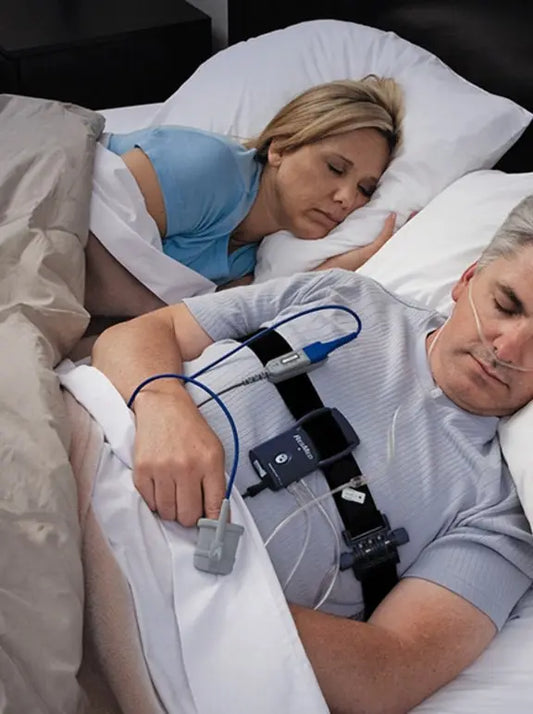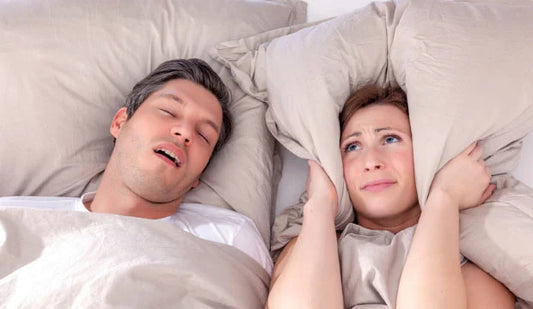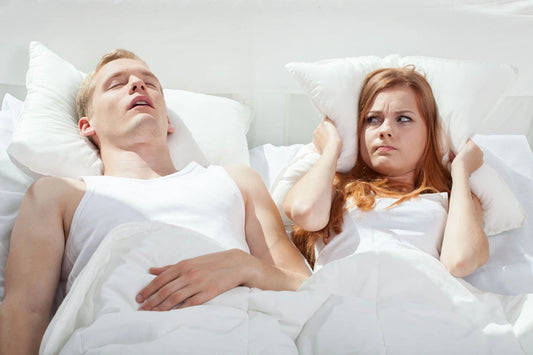Night terrors: causes, mechanism and treatment
Night terrors, also known as parasomnias, are a sleep disorder that occurs during sleep hours in deep sleep phases, usually during the first part of the sleeper's night.
Here are some typical characteristics of night terrors:
- Screaming or yelling: Affected sleepers may start screaming or screaming during deep slow-wave sleep.
- Sweating: The person may sweat profusely during the night.
- Difficulty waking up: During a night terror, the person sleeping may appear to be awake with their eyes open. Also, once awake, she may not remember the episode.
- No memory of the event: The person who had a night terror usually does not remember the event the next morning.
It is important to note that nocturnal lurches are different from nightmares. Nightmares occur during REM sleep, usually later in the night, and are often recalled upon waking.
Night terrors, symptom and cause?
Night terrors, night scare or night panic are thought to affect nearly half of children up to the age of 4. They are much less common when the child reaches the age of 5. Night terrors in children can have very different causes. It is therefore necessary to distinguish:
- Physical causes (breathing difficulties such as asthma, ENT obstruction, fever due to an infectious disease or sometimes taking certain medications, etc.).
- Anxiety-provoking events (change of nanny, arguments between parents, moving, abrupt cessation of naps, etc.) can cause nocturnal anxiety.
- Psychological causes (insomnia, sleep time, sleep quality, drowsiness, sleep apnea sleep cycles, hypersomnia, narcolepsy and many others..)
Night terrors in adults or teenagers are much rarer (less than 5% of the population is affected). Depending on the state of the brain and the brain activity at the beginning of the night, as an excess of stimulants can cause a state of stress that can lead to restless sleep and disturb the sleep rhythm or a nighttime nightmare.
What are the mechanisms of night terrors?
A night terror or night scare "parasomnias" can happen suddenly and brutally during the sleep phase, people stand up, scream or cry.
They can be found in a sitting position, sometimes standing, with their eyes wide open. His words can be incoherent. He is often short of breath, sweating, and inflamed cheeks. They can sometimes exhibit aggressive behavior. It's hard to get him to wake up from his slumber.
This episode can be very short (a few minutes), but it can also last for half an hour. In adult or teenager night terrors, we notice when we wake up a total forgetfulness of the crisis that has occurred, unlike the nightmare which leaves a painful impression and a few snatches of memory.
As with the child, it is found that the night terror does not wake him up and that he continues to sleep, even if it is found that his eyes are open. Whether in children, adolescents or adults, night terrors can also be accompanied by sleepwalking.

Treatment of night terrors, what to do?
No medical treatment is able to treat night terrors, which usually fade over time. It is certain that a healthy lifestyle will promote the child's sleep.
Respect bedtimes (go to bed early), sleep cycle, and sleep duration
Avoiding sleep deprivation during the day, avoiding games that can excite him or reading scary stories, are all assets for a peaceful sleep.
When night terrors occur often and they end up disrupting the sleep of everyone in the family, then it is best to consult a doctor or pediatrician. The healthcare professional will be better able to reassure parents or spouses and decide on the right course of action. *Valid for sleep apnea, insomnia, hallucinations or nocturnal awakenings.

Sleep apnea and night terrors, a miracle solution?
Obstructive sleep apnea (OSA) consists of brief shortnesses in breathing in an involuntary manner. It is a condition that usually affects adults, but it can also affect children. It profoundly disturbs sleep, causes snoring and particularly noisy breathing.
Sometimes sleep apnea is mistaken for night terrors. There are minimally invasive solutions such as a stent. They allow the airways to be cleared during wakefulness (deep sleep phase or REM sleep phase), the obstruction of which is sometimes responsible for night terrors.
They ensure continuous, peaceful breathing and a restful sleep to sleep better in the arms of morpheus. There is a second solution. Its principle consists of advancing the lower maxilla (mandible) with the help of an orthosis. This also involves removing any obstruction of the airways by freeing the passage of air through the pharynx.
Conclusion
Night terrors are sleep disorders that often worry parents, but usually disappear by the end of childhood. Night terrors cannot be cured, but can be reduced with a healthy lifestyle.
Finally, it should not be forgotten that they can be due to a physical cause such as an airway obstruction, which a doctor will be able to diagnose.

- Choosing a selection results in a full page refresh.
- Opens in a new window.







